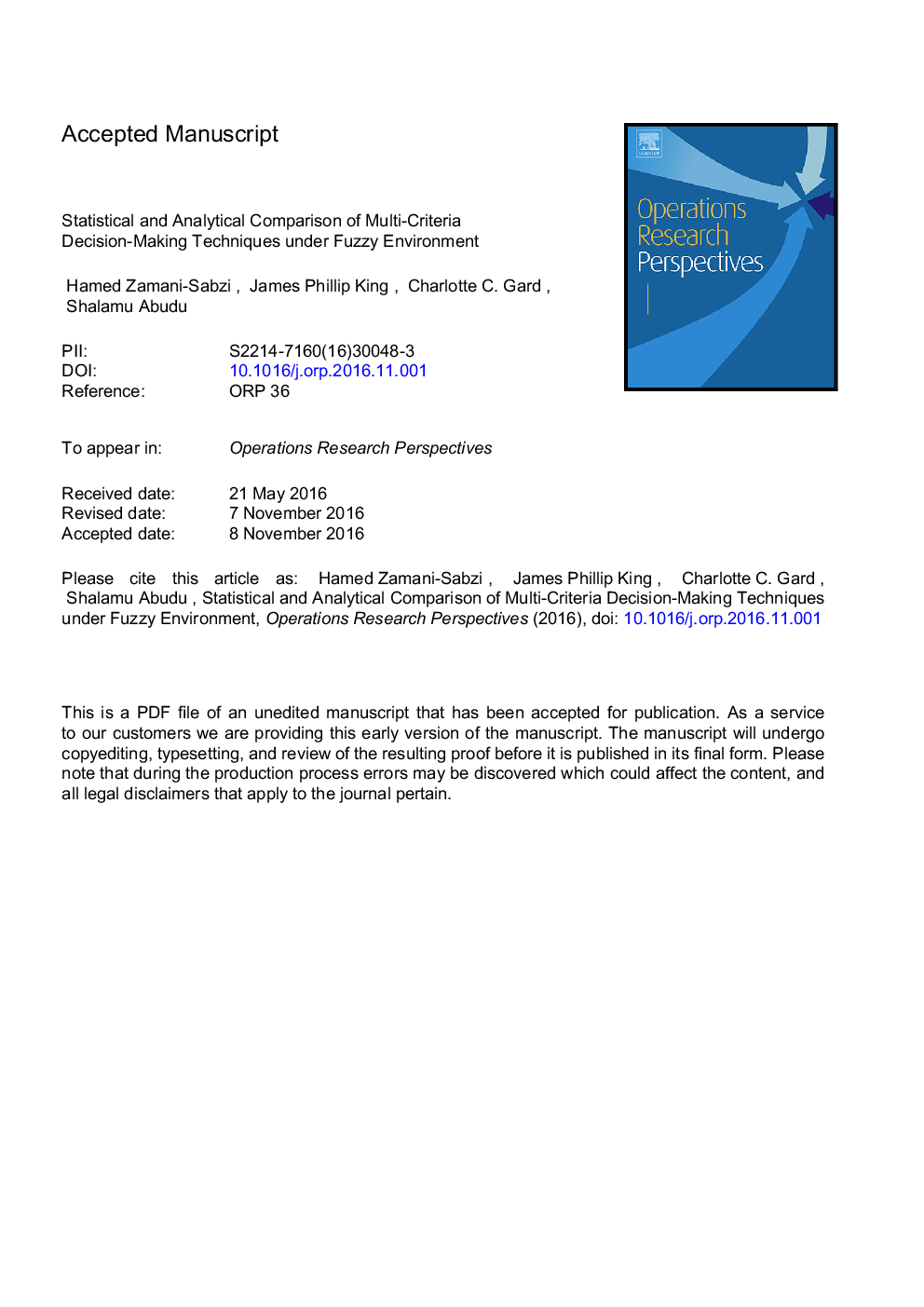| کد مقاله | کد نشریه | سال انتشار | مقاله انگلیسی | نسخه تمام متن |
|---|---|---|---|---|
| 6899218 | 703864 | 2016 | 58 صفحه PDF | دانلود رایگان |
عنوان انگلیسی مقاله ISI
Statistical and analytical comparison of multi-criteria decision-making techniques under fuzzy environment
ترجمه فارسی عنوان
مقایسه آماری و تحلیلی از تکنیک های تصمیم گیری چند معیاره در محیط فازی
دانلود مقاله + سفارش ترجمه
دانلود مقاله ISI انگلیسی
رایگان برای ایرانیان
کلمات کلیدی
تجزیه و تحلیل آماری روش های رتبه بندی، محیط فازی تصمیم گیری چند معیاره، تخریب پذیری،
موضوعات مرتبط
مهندسی و علوم پایه
مهندسی کامپیوتر
علوم کامپیوتر (عمومی)
چکیده انگلیسی
Different multi-criteria decision-making (MCDM) techniques require different levels of computational intensity and may produce different outputs, so selecting an appropriate technique largely determines the quality of the recommended decision and the effort required to obtain that decision. In most real environments, criteria and their constraints are not deterministic and cannot be specified precisely; therefore, those criteria are uncertain or fuzzy. To facilitate the selection of an appropriate MCDM method under a fuzzy environment, this study investigates and statistically compares the performances of ten commonly used MCDM techniques: simple additive weights (SAW), weighted product method (WPM), compromise programming (CP), technique for order preference by similarity to ideal solution (TOPSIS), four types of analytical hierarchy process (AHP), VIKOR (in Serbian: VIseKriterijumska Optimizacija I Kompromisno Resenje), and ELECTRE (in French: ELimination Et Choix Traduisant la REalité). These techniques' performances were compared using fuzzy criteria and constraints, matching the conditions usually found in real applications. To conduct the comparisons, the 10 multi-criteria decision ranking methods were applied to 1250 simulated sets of decision matrices with fuzzy triangular values, and 12,500 sets of ranks were analyzed to compare the ranking methods. SAW and TOPSIS had statistically similar performances. ELECTRE was not preferable in providing full, sorted ranks among the alternatives. VIKOR considering its ranking process, for specific conditions, assigns identical ranks for several alternatives; when full, sorted ranks are required, VIKOR is unfavorable, although it is a powerful technique in introducing the closest alternative to the ideal condition. Types 1 and 3 of AHP and types 2 and 4 of AHP had close performances. Notably, no ranking method was significantly sensitive to uncertainty levels when uncertainty changed symmetrically.
ناشر
Database: Elsevier - ScienceDirect (ساینس دایرکت)
Journal: Operations Research Perspectives - Volume 3, 2016, Pages 92-117
Journal: Operations Research Perspectives - Volume 3, 2016, Pages 92-117
نویسندگان
Hamed Zamani-Sabzi, James Phillip King, Charlotte C. Gard, Shalamu Abudu,
